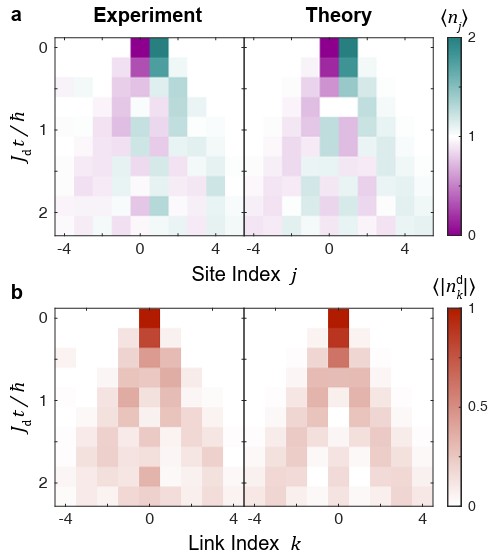Welcome to the Greiner Lab!
We use ultracold quantum gases on optical lattices to simulate models from condensed matter physics. Thanks to the microscopy technique developed here, we can see and manipulate individual atoms to perform experiments with remarkable levels of control and accuracy.
For the nonexperts, the 10-minute documentary introducing the background, motivation, and apparatus of our lab is a great starting point. To learn about the sciences, follow the links in the navigation bar to each individual lab.
Recent Publications
(View All)
Multi-Particle Quantum Walks in a Dipole-Conserving Bose-Hubbard Model

When particles move through a crystal or optical lattice, their motion can sometimes become frozen by strong external forces – yet collective motion may still emerge through subtle many-body effects. In this work, we explore such constrained dynamics by realizing a dipole-conserving Bose-Hubbard model, where single atoms are immobile but pairs of particles can move cooperatively while preserving the system’s center of mass, i.e. the overall dipole moment of the particle distribution. Starting from a one-dimensional chain of ultracold bosonic atoms in an optical lattice, we generate localized dipole excitations consisting of a hole and a doublon using site-resolved optical potentials and characterize their quantum walks and scattering dynamics. Our study provides a bottom-up investigation of a Hamiltonian with kinetic constraints, and paves the way for exploring low-energy phases of fractonic matter in existing experimental platforms.
News
Sandra joins Greiner lab
Temperature breakthrough by Lithium team!
 Recent work in Nature from the lithium lab, reaches unprecedentedly low temperatures in the Hubbard model, bringing quantum simulations into a regime where they can be truly useful for addressing open questions in material science and condensed matter physics, and where classical simulations are at their limit.
Recent work in Nature from the lithium lab, reaches unprecedentedly low temperatures in the Hubbard model, bringing quantum simulations into a regime where they can be truly useful for addressing open questions in material science and condensed matter physics, and where classical simulations are at their limit.